Picture this: you excitedly unwrap a fancy new cat bed, only to watch your feline friend completely ignore the plush cushion and dive straight into the cardboard box it came in. Sound familiar? You’re definitely not alone in this amusing yet puzzling scenario.
Felines love cardboard boxes for a variety of reasons, and it’s a widely known fact that cats love boxes. This isn’t just a quirky internet meme or your imagination running wild. There’s actual science behind your cat’s obsession with these humble containers, and understanding it might just help you become a better cat parent. So let’s get started and explore the fascinating world of feline psychology, one cardboard box at a time.
The Ultimate Security Blanket: Safety First
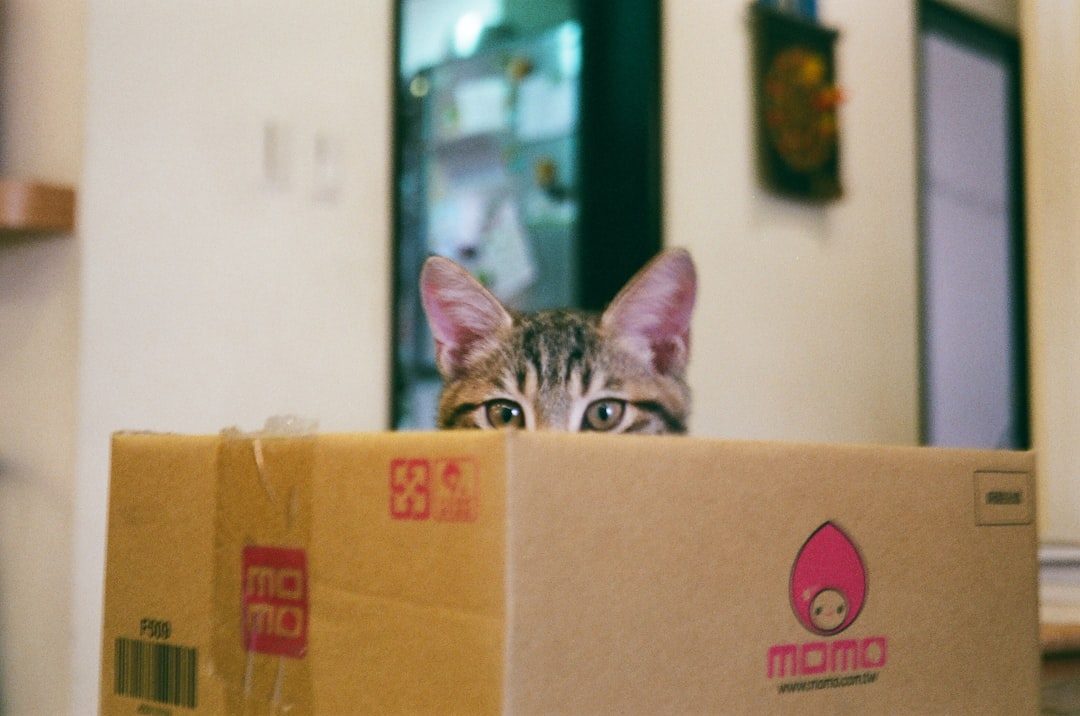
Boxes give cats control, comfort, and prime ambush angles, which means that hiding behavior in a box or enclosed space might just be what a cat needs to feel safe. Think about it from your cat’s perspective for a moment. In the wild, finding a secure hiding spot could mean the difference between life and death.
In the wild, small, hidden spaces protect cats from predators. A box is a secure, enclosed environment that triggers a cat’s natural instinct to find a safe den. Curling up in a box lets a cat keep watch while feeling hidden and safe. Your pampered house cat still carries these deep-rooted survival instincts, even though the most dangerous predator they face might be the vacuum cleaner.
Enclosed spaces give cats a sense of security and a place to find refuge, especially in new environments. This explains why you might notice your cat gravitating toward boxes during stressful times like moving to a new home or when visitors arrive unexpectedly.
The Perfect Temperature Control System
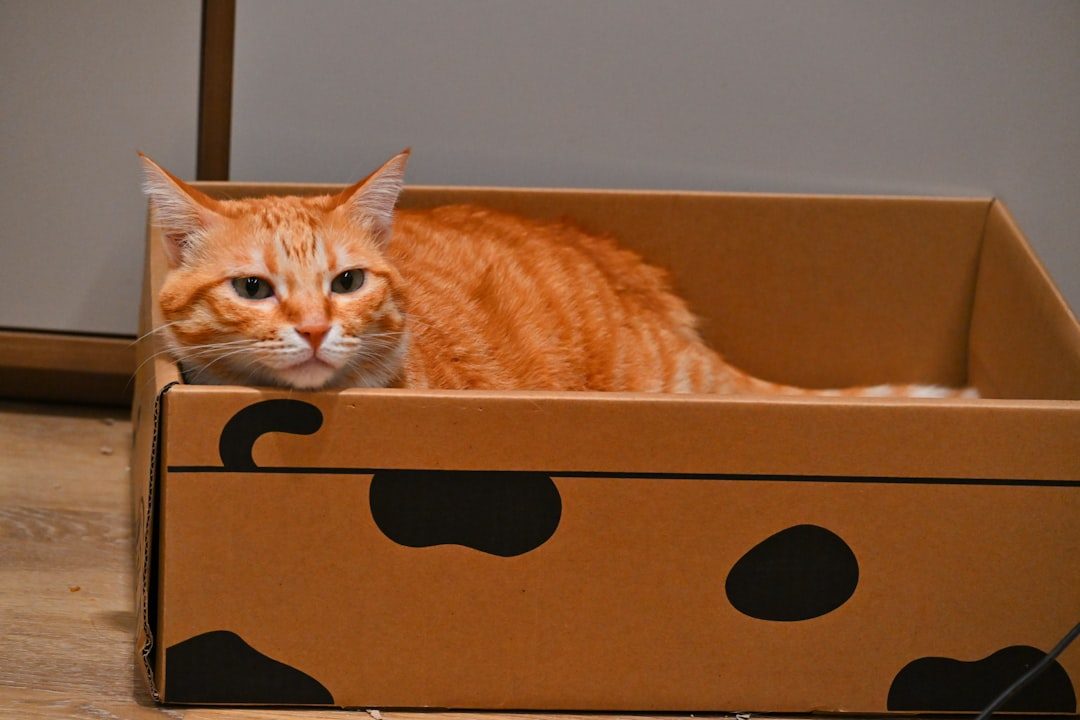
Another reason why cats love boxes is because they’re great for warmth! Not only is cardboard an amazing insulator, but the small space that boxes offer encourages your cat to curl up and relax, making it a comfy, warm space. Your cat isn’t just being lazy when they curl up in that Amazon delivery box.
Research suggests cats are most comfortable in temperatures between 86–97°F. The same group also found that most cats live in environments maintained at about 72 degrees, which is significantly cooler than their preferred temperature zone. That’s quite a temperature gap to bridge.
The cardboard acts like a cozy blanket, trapping the cat’s body heat and acting as an insulator. The confined space of a box forces a cat to curl up into a ball, which also helps to preserve body heat. Essentially, your cat has discovered the perfect DIY heating system that costs absolutely nothing to operate.
Built-In Entertainment Center
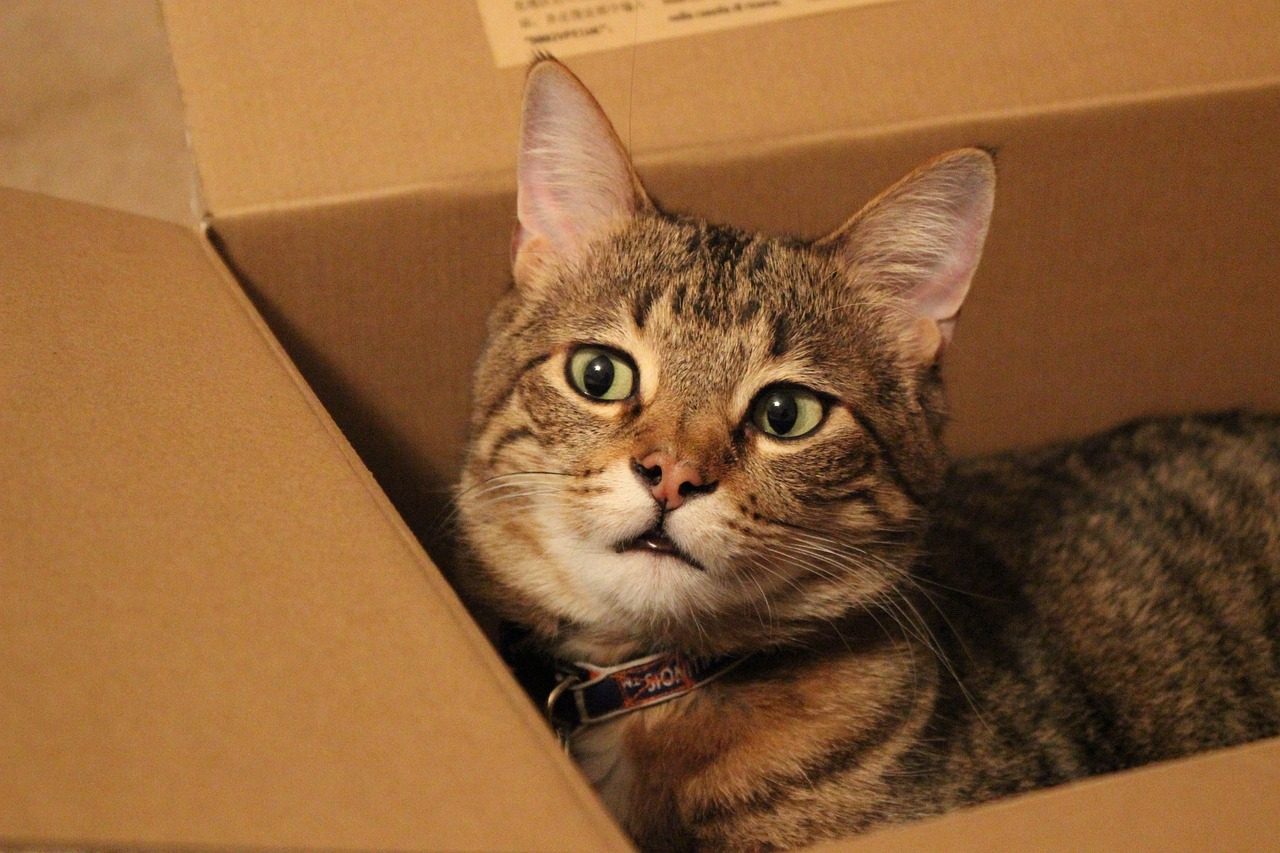
Your cat’s cardboard obsession isn’t just about comfort and safety. Another reason why cats love boxes so much is the texture. Cardboard is the perfect texture for your cat to bite and scratch, making them great fun to play with. It’s like having a scratching post, chew toy, and playground all rolled into one convenient package.
Have you ever noticed your cat pouncing in and out of a box, or even attacking its corners? The crinkly texture and confined space of cardboard makes for an enriching sensory experience. Cardboard is the perfect texture for a cat to bite, scratch, and shred. The sound alone can keep some cats entertained for hours.
But there’s also a simpler explanation: Your pet just loves the corrugated texture on the edge of the boxes. The texture is soft and may be easier for cats to puncture than other objects, giving them easy satisfaction for both chewing and clawing.
Prime Real Estate for Hunting Practice
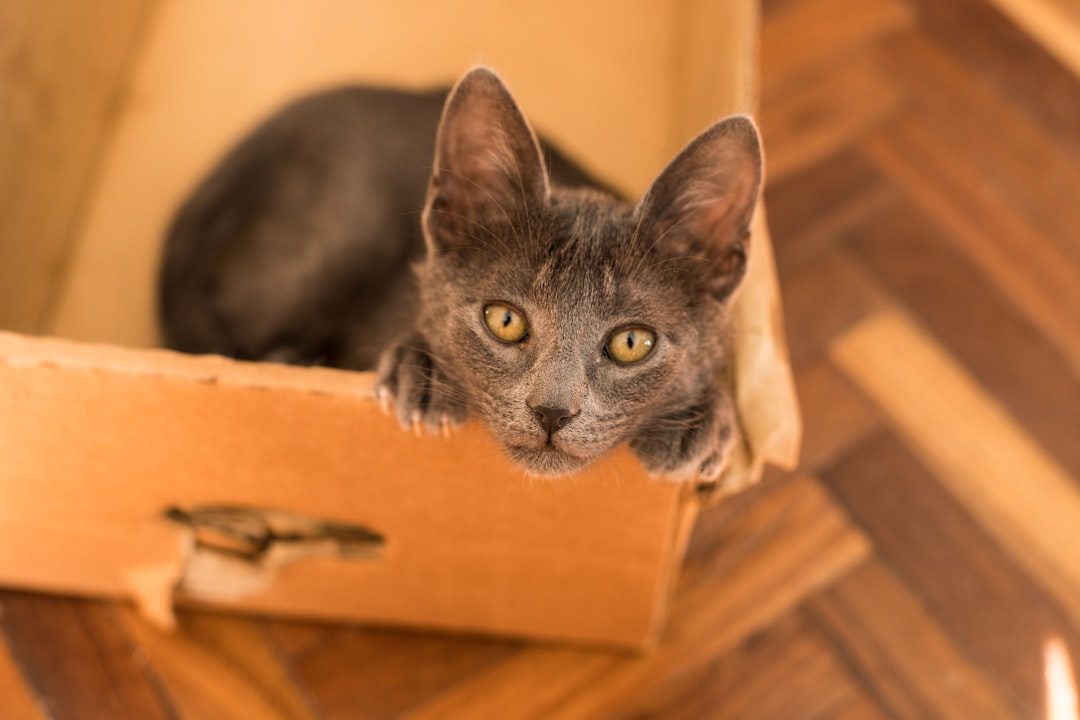
In the wild, cats are predators. They have to be stealthy to catch their next meal, which often involves hiding in small spaces where they can’t be seen. This is crucial for survival because it helps them sneak up on unsuspecting prey. Even though your house cat’s biggest hunt might be stalking a dust bunny, those predatory instincts remain razor sharp.
One crucial benefit relates to their hunting instincts. Cats that roam free outside occupy a delicate midpoint in the neighborhood food chain, where they are both predator and prey. Boxes give cats control, comfort, and prime ambush angles. Your cardboard box becomes the perfect observation post and launching pad for surprise attacks.
Whether they’re stalking a mouse or preparing a sneak attack on your legs as you walk by, cats need tight, hidden spaces to observe and not be seen until the timing is right. That innocent-looking box in the corner? It’s actually a sophisticated tactical headquarters.
Curiosity Killed the Cat, But Boxes Brought It Back
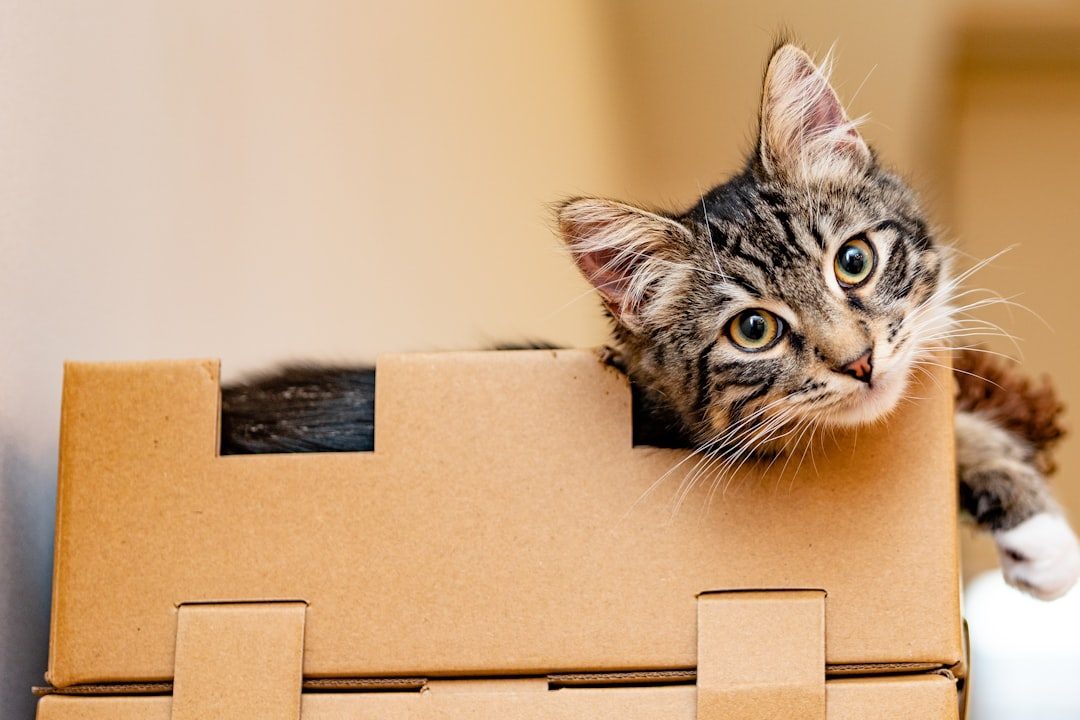
Cats are curious creatures, and boxes present an exciting world of exploration. Every new box that enters your home represents a mystery waiting to be solved. What secrets does it hold? What adventures await inside?
A newly arrived box is also a change to a cat’s environment. Cats that live indoors know every inch of their kingdom and immediately notice any changes. For a curious cat, the box is something fun and novel to investigate. Your cat has memorized every detail of their territory, so when something new appears, it demands immediate investigation.
Cats are notoriously curious creatures, so it should come as no surprise that whenever you buy something new, they make a beeline for it to investigate. Not only does the new item smell different, but your cat is also curious to see what the purpose of the new item is in their home. If you buy an item that comes in a box, don’t be surprised to see your cat rubbing itself around it and having a good look!
The Science of Stress Reduction

Multiple studies have shown that stress hormones like cortisol are reduced in newly rescued cats when they are given access to a box. This isn’t just anecdotal evidence from cat lovers. There’s legitimate scientific research backing up the therapeutic benefits of cardboard containers.
A study on Dutch shelter cats found that when cats are given boxes, their stress levels decrease significantly faster than cats not given boxes. The impact was so pronounced that many animal shelters now consider cardboard boxes essential equipment rather than optional enrichment.
A study from the University of Utrecht in the Netherlands showed that newly arrived shelter cats who had access to boxes recovered faster and adapted quicker to their new environment compared to cats who did not have access to boxes. Because boxes offer an opportunity to hide, they provide comfort and security, which are crucial when cats are feeling stressed or anxious. Cats may nestle in the safe haven of a box to take a break from the outside world.
The Ultimate Bedroom and Hideaway
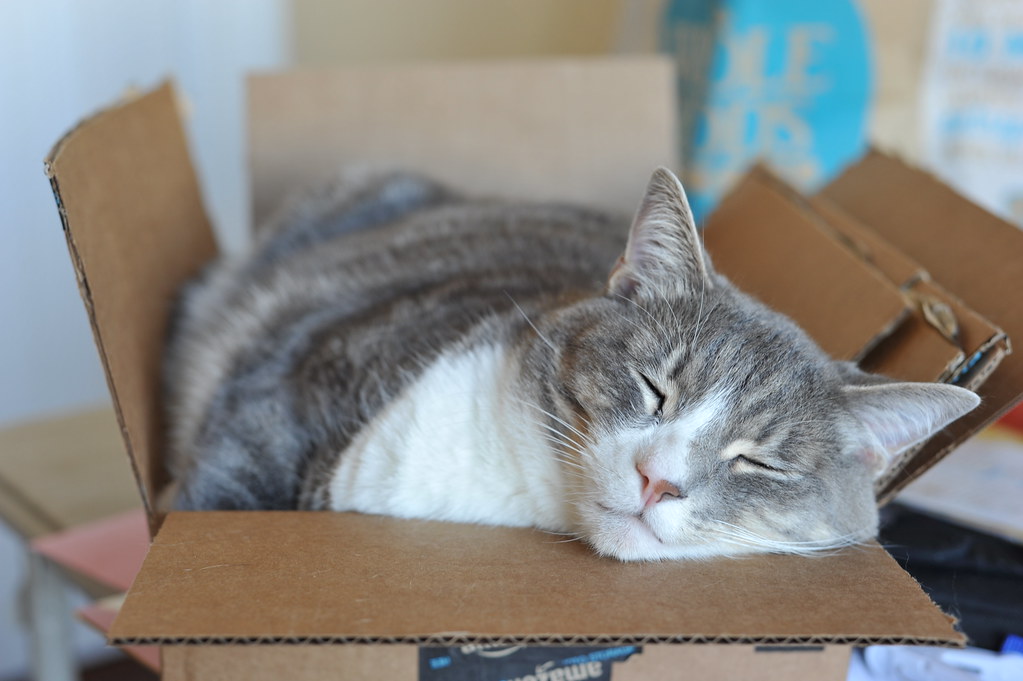
Another reason why cats like boxes is because they are a great place to sleep. Cats spend up to 16 hours every day sleeping, so finding the perfect spot is important. Where you may see a simple cardboard box, your cat sees a safe, luxury cave that promises warmth and protection. With that much sleep time to fill, location really matters.
And because cats typically sleep up to 12–16 hours a day, finding the ideal (and safe!) spot to snooze is important to them. Your cat approaches sleep with the seriousness of a hotel critic reviewing five-star accommodations.
Let’s face it: some cats do not want to be bothered. Maybe you have company in the home your cat does not know, making them uncomfortable. Instead of trying to get to know your guests, they hide in a box. Another scenario is that they want to get away from other pets in the home, and they deduce that the cardboard box is their best option.
Scent Marking and Territory Claims

Your feline may love the feel of the box, giving them a great place to chew and claw. Another common occurrence is when a cat chews on the flaps or the side of the box, it is their way of scent-marking the box with their pheromones. Every bite and scratch is essentially your cat signing their name on their new property.
The texture of cardboard allows them to scratch on it, which helps them maintain their claws and mark their territory. This dual-purpose activity serves both practical and social functions in your cat’s daily routine.
When your cat rubs against, scratches, or even gently bites their cardboard box, they’re depositing scent markers that communicate ownership to other pets in the household. It’s their way of putting up an invisible “Property of Fluffy” sign that only other cats can read.
The Fascinating World of Feline Optical Illusions

A more recent paper looked into the cat’s obsession with the enclosed, square shape of objects like cardboard boxes, laundry baskets, and simple outlines on the floor. The researchers confirmed the cats have “illusory contour susceptibility,” which means they perceive contours that do not exist in reality. In the experiments, cats sat on a square-shaped illusion, known as a Kanizsa square, just as often as a real square. Your cat might actually be seeing boxes that aren’t really there.
This mind-bending discovery suggests that your cat’s box obsession runs even deeper than we previously understood. Every cat owner knows how much cats love sitting in boxes, now a citizen science investigation has revealed that felines like to sit in squares that have a similar silhouette as a real box, demonstrating that cats may have a false sense of security by illusory contours.
Think about how many times you’ve seen your cat sitting in a square of sunlight on the floor or positioning themselves within the boundaries of a rug. They might be experiencing the same psychological comfort they get from actual boxes, even when there are no walls around them.
Cat Tunnel Bed: The Ultimate Box Alternative

Nala Cat Tunnel Bed is a chase, play and nap toy. Cabana bed for ultimate kitty relaxation Product Highlights: Play balls in each opening Compact design when folded up Hide and sleep tunnel w/ cabana bed for ultimate kitty relaxation. If you want to give your cat the box experience with more durability and style, tunnel beds offer the perfect solution.
If you want one thing that does many jobs, this felt tunnel/bed combo is a clever solve. The StayPurr Hideaway Tunnel Bed is an all-in-one piece that checks key boxes: it’s a cozy calming cave, a tunnel for play and confidence-building, a bed for naps, and a felt cat scratcher surface cats can claim as their own. The dense synthetic felt gives satisfying traction for claws while staying quiet and low-mess – ideal for apartments and shared spaces.
Cat Trees with Built-In Hideouts

For a nap or a cozy retreat, your cat can cuddle up inside the plush hammock with metal rim, and cozy ring-shaped bed, or crawl inside one of two plush-covered kitty condos. One of the condos connects directly to a playful plush-lined slide tunnel. Cat trees with enclosed spaces give your feline friend the best of both worlds: vertical territory and cozy hideaways.
Every animal needs a “comfort zone” where they can go to feel safe and relax. Closets, open crates, high shelves, cat trees, the space under beds, and rooms sectioned off with baby gates are great places to put a comfy cat bed or blanket to create a safe place. The key is providing multiple options so your cat can choose their preferred retreat location.
The Tunnel Tower is a unique design that offers many levels of lounging, scratching and perching. The hideaway tunnel and large flat surfaces provide lots of space for multiple cats. These multi-level structures satisfy your cat’s need for both horizontal and vertical territory.
Interactive Puzzle Boxes and DIY Enrichment
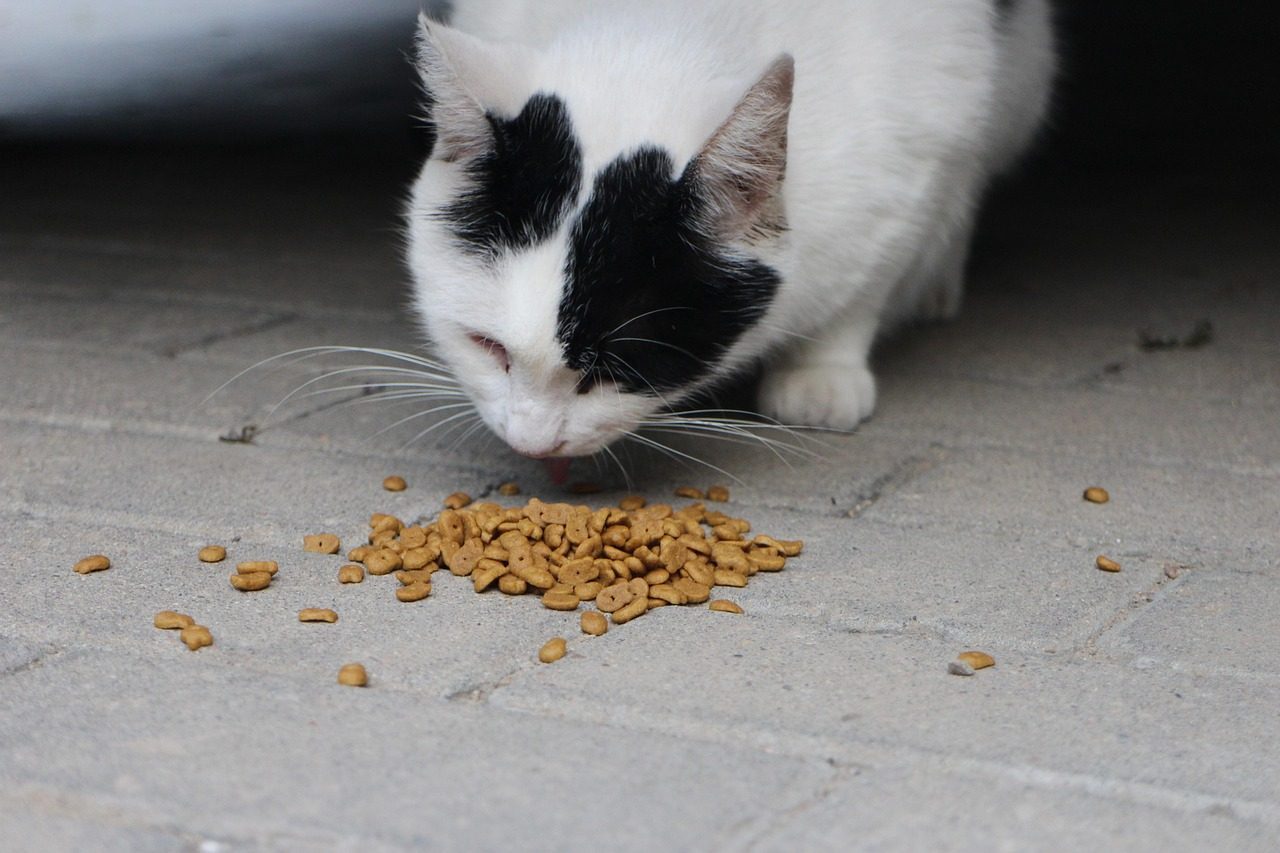
Boxes make great food puzzles! Cut some holes in a shoe box, tape the lid on, stuff with balls and mice as obstacles, sprinkle in dry kibble or treats. Small boxes can be a rolling puzzle. Simply cut however many holes in the box you would like, secure it closed and your cats can flip it around to obtain food. You can transform ordinary boxes into engaging brain games.
Store-bought cat enrichment feeders have all sorts of nooks and crannies to hide tasty kibble or treats in, but you can easily DIY your own with toilet paper rolls or a muffin tin. The beauty of puzzle feeders is that they combine your cat’s love of enclosed spaces with their natural foraging instincts.
You likely have a few empty toilet paper rolls, which make excellent interactive toys. Fold the ends of the toilet paper roll to create a closed cylinder. Cut a few small holes in the sides for treats to slip out. Place a few cat treats inside the roll. Let your cat bat the roll around to release the treats through the holes. This toy stimulates your cat’s hunting instincts and encourages problem-solving.
Premium Scratching Alternatives with Hideout Features
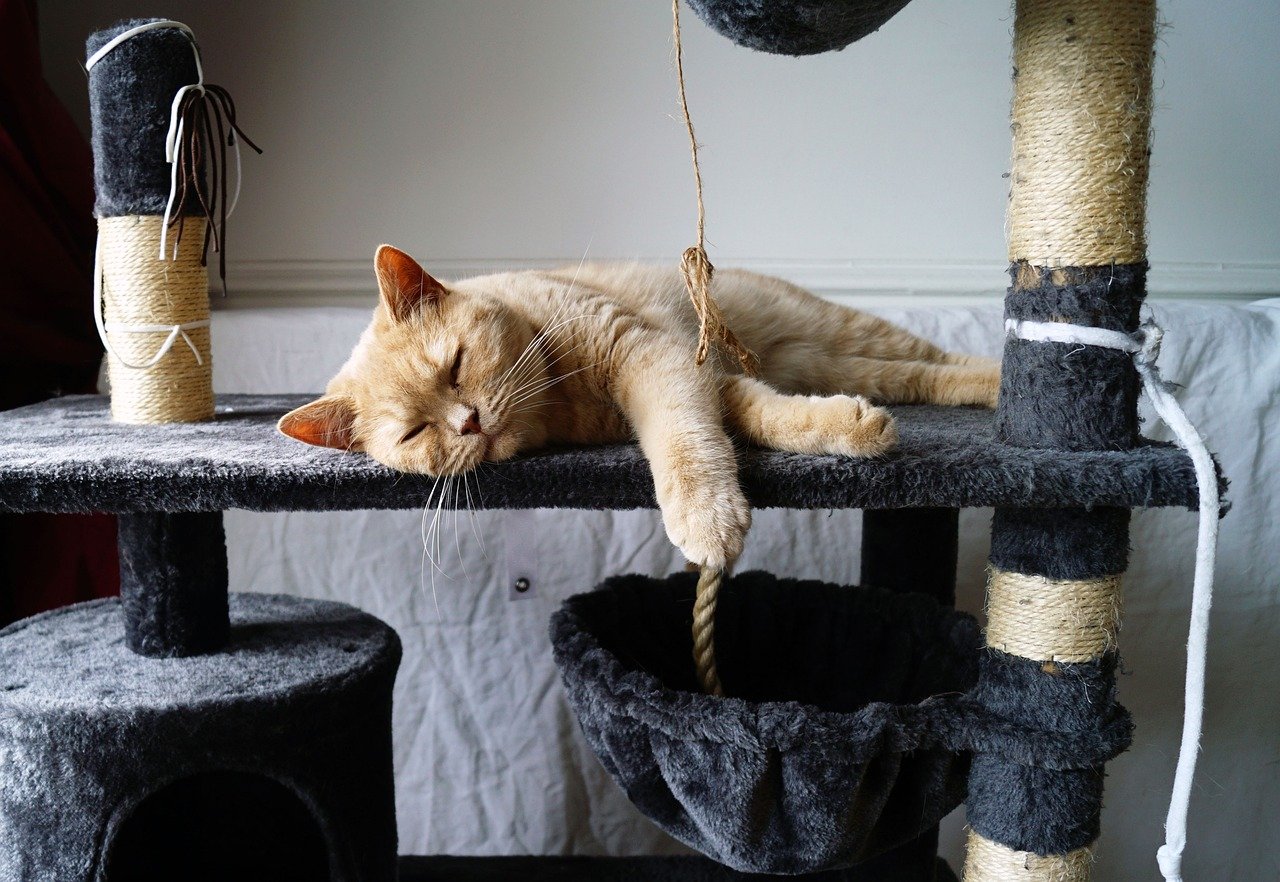
Scratch Lounge Classic goes beyond your standard one sided cat scratcher. The three sided scratching surface satisfies your cats natural need to nest and will last longer than traditional scratchers. When you want to upgrade from cardboard boxes but maintain that enclosed feeling, specialized scratching lounges offer an elegant solution.
Our pick for the best overall cat scratching post for every life stage is the Hepper Hi-lo Cat Scratcher. This durable scratcher features a unique 3-angle design that caters to all ages and sizes and allows your kitty to stretch, scratch, and even hide behind it if they choose. Your cat can choose between high, low or lower positions. The interesting architecture of the scratching post keeps your cat engaged and away from your furniture.
Sit-N-Scratch is the perfect economical scratching and lounging spot for cats. Cats love scratching and playing with corrugated cardboard and curling up on the textured surface to rest and relax. These hybrid products give your cat the cardboard experience they crave while providing longer-lasting entertainment.
Multi-Level Cat Condos and Activity Centers
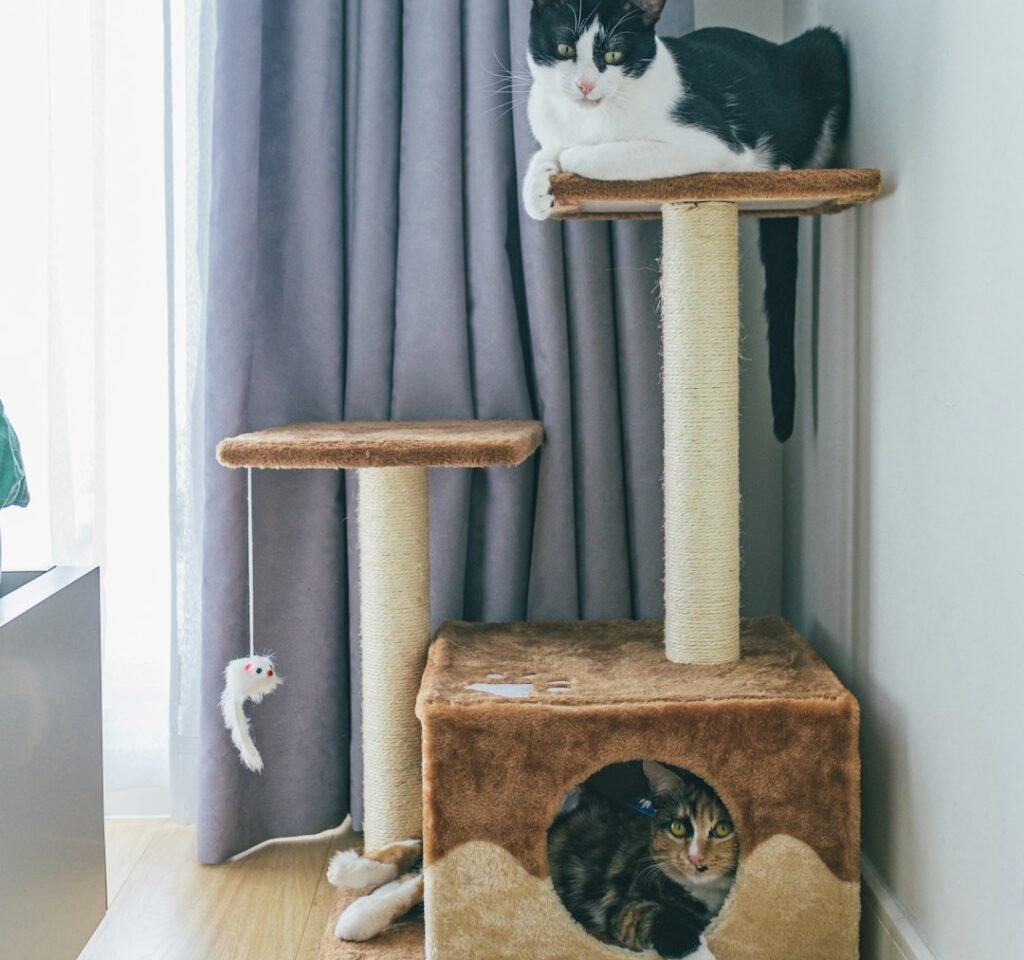
This amazing piece of cat furniture is built to accommodate multiple cats, providing them with a lavish home to call their own! With its multiple platforms, perches, caves, and sisal rope scratching posts, your cats will never be bored in this activity center. For households with multiple cats or particularly active felines, comprehensive activity centers can replace the need for scattered cardboard boxes throughout your home.
Three cozy beds offer the ultimate in kitty comfort and security. Sturdy carpeted scratch posts let cats really stretch and scratch. Playground-N-Lounge is the perfect kitty playground with a penthouse pedestal. Three scratch posts offer a variety of scratch surfaces and the sleeping level has a paw pleasing textured surface for cat comfort.
These elaborate setups might seem like overkill, but they address every reason your cat loves cardboard boxes: security, warmth, entertainment, scratching opportunities, and elevated observation points. Think of them as the luxury resort version of your cat’s cardboard hotel.
Your cat’s cardboard box obsession makes perfect sense when you understand the science behind it. These simple containers satisfy multiple deep-rooted feline needs simultaneously: security, warmth, entertainment, territory marking, stress relief, and hunting practice. Whether you embrace the cardboard chaos or invest in more permanent alternatives, the key is recognizing that your cat’s behavior isn’t random or silly – it’s instinctive and necessary for their wellbeing.
The next time you catch your cat choosing a beat-up Amazon box over their expensive cat bed, remember that they’re not being ungrateful or difficult. They’re simply following millions of years of evolutionary programming that tells them enclosed spaces equal safety and comfort. What do you think about your cat’s box obsession now? Have you noticed which type of hiding spots your feline friend prefers? Tell us in the comments.





